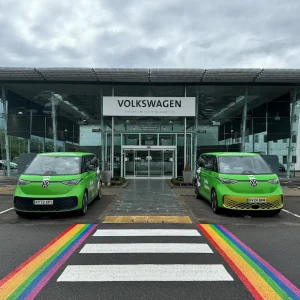Jaguar Land Rover has announced it will create a fleet of 100 vehicles to develop and test connected and autonomous technologies over the next four years.
The first vehicles will be driven on a 41-mile test route around Coventry and Birmingham later this year.
JLR said the first tests will consist of vehicle-to-vehicle and vehicle-to-infrastructure tests, with the eventual aim of allowing connected cars to work together to assist the driver.
Technologies being tested by the group include:
Roadwork Assist:
The car has a forward-facing camera which can recongise cones and barriers, with the system sensing when you’re approaching the start of the works and identify a path through the construction site.
Safe Pullaway:
Vehicle brakes are automatically applied when the car senses a collision is likely when travelling at low-speed, such as in a traffic jam or entering a junction.
Over The Horizon Warning:
JLR testing the use of radio signals to transmit data from vehicle to vehicle, allowing drivers to be warned of hazards in advance. JLR said the data could allow connected emergency vehicles to communicate with other vehicles, giving them a visual warning of the direction the emergency vehicle is coming from and how far away it is.
“Our connected and automated technology could help improve traffic flow, cut congestion and reduce the potential for accidents. We will also improve the driving experience, with drivers able to choose how much support and assistance they need. In traffic, for example, the driver could choose autonomy assist during tedious or stressful parts of the journey,” said Tony Harper, head of research at Jaguar Land Rover. “But even when an enthusiastic driver is fully focussed on enjoying the thrill of the open road, the new technology we are creating will still be working in the background to help keep them safe.”
“Because the intelligent car will always be alert and is never distracted, it could guide you through road works and prevent accidents. If you are a keen driver, imagine being able to receive a warning that there’s a hazard out of sight or around a blind bend,” he added. “Whether it’s a badly parked car or an ambulance heading your way, you could slow down, pass the hazard without fuss and continue on your journey.”





